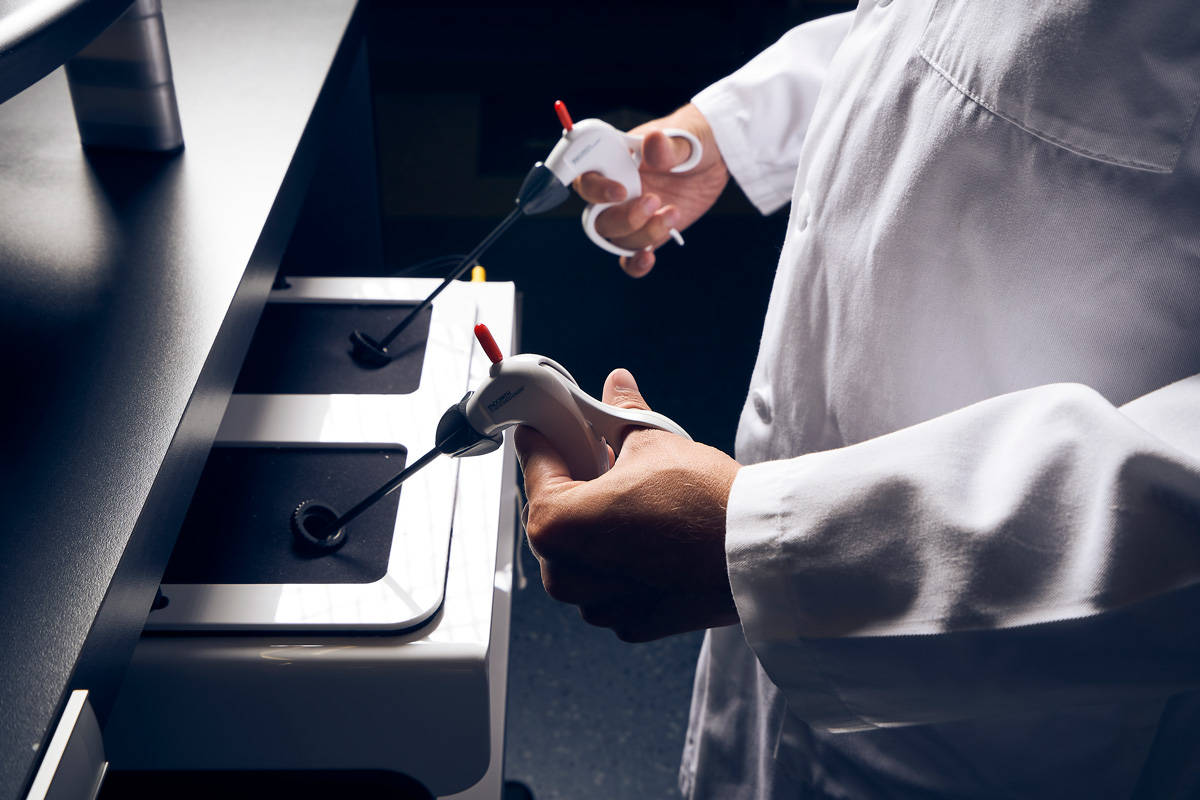ATLAS isn’t just a research lab; it also houses the only medical illustration studio in Western New York and surgical training facilities, all supported by Roswell Park and grants. We have released more than 140 peer-reviewed publications and filed for more than a dozen patents in support of our innovations. Our main focus is improving patient care, advancing cancer treatment, enriching patient education and furthering surgical innovations.
International Radical Cystectomy Consortium (IRCC)
ATLAS is home to the International Radical Cystectomy Consortium (IRCC), the world’s largest robotic cystectomy database. This multinational, multi-institutional archive, comprised of 35 institutions in 13 countries, is responsible for publishing more than 20 key publications, establishing the foundation for safety and efficacy of robot-assisted cystectomy and urinary diversion for bladder cancer.
Irrigation study
We investigated the mechanism of local recurrence after bladder cancer and the effect of pneumoperitoneum on peritoneal immune response against tumor cells using Next Generation Sequencing. This work has been awarded the best poster presentation in the American Urological Association (AUA) meeting in 2016 and was featured in AUA News. Determining the pathogenesis of relapsing bladder cancer despite sound surgical techniques can lead to substantial improvement in patient survival and may open new horizons for treatment.
Spatial analysis and geomapping
We are investigating the spatial correlations between patients’ homes and environmental parameters to identify hot spots of bladder cancer in Western New York to map significant clusters of bladder cancer in the region and the associated environmental risks. Such analysis may have significant implications in prevention and early detection of bladder cancer and, consequently, improve patient survival rates while decreasing healthcare costs.
Art heals
In collaboration with the Albright Knox Art Gallery, we investigated how exposure to art affects postoperative care. The study explored whether viewing art improved hope, well-being, anxiety, and pain for cancer patients hospitalized after surgery.
TechnoFields
Robot-assisted surgery has changed not just procedures but the layout of operating rooms. Physicians now perform procedures from a console, separated by the patient and the rest of the team, which can affect communication and team dynamics. At ATLAS, we developed and verified a method that ensures neither care nor surgical team communication is compromised. These studied interactions led to recommendations regarding performance optimization and adverse events reduction.
Mind maps
As robot-assisted surgery continues to evolve, it is important to understand how a surgeon’s brain and the robot interact. A surgeon’s learning process, skill acquisition and both mental and physical workloads during a procedure are quite different from what is experienced during a traditional open or laparoscopic surgery. ATLAS was the first to study differences in cognitive function between experts and novices while performing robot-assisted surgery, while also describing how mentoring during surgery can help cognitive learning in addition to one-on-one training.
Surgical scoring systems
We developed and validated various new scoring systems for robot-assisted urological surgical procedures that can be used for objective evaluation of surgical performance. These systems provide expert-based, structured feedback, guiding and tailoring your training activities and shortening learning curves. These tools also can be valuable for surgeons’ credentialing and remediation, insurance companies and hospital managers.
Surgical techniques
Khurshid Guru, MD, Director of the ATLAS program, is one of the early fellowship-trained robotic surgeons (2004), logging more than 10,000 surgical console hours and performing more than 2,500 procedures. He pioneered the robotic cystectomy program at Roswell Park and performed the first robotic cystectomy in Western New York in November 2005. His “Technique of Spaces” for bladder cancer divided the procedure into well-defined steps, simplifying the technique and making it easier to teach. He also developed the Marionette technique for ileal conduits and the modified Hautmann “W” neobladder for robot-assisted urinary reconstruction after cystectomy.
Investigational treatments
In collaboration with our basic science team and shared resources, ATLAS conducts several studies exploring innovative treatment options for bladder cancer, including the use of newer immunotherapeutic agents and photodynamic therapy.
Surgical devices
We have developed and patented several surgical devices, including:
- Suction device capable of breaking down viscous material, such as blood clots
- Laparoscopic suturing device that facilitates efficient, quality intracorporeal suturing
- Device for segmental compression of the kidney during partial nephrectomy, reducing bleeding during tumor removal while minimizing ischemia
- Specialized cart that stores and sterilizes surgical instruments in the operating room, delaying and minimizing procedural interruptions during robot-assisted surgery
